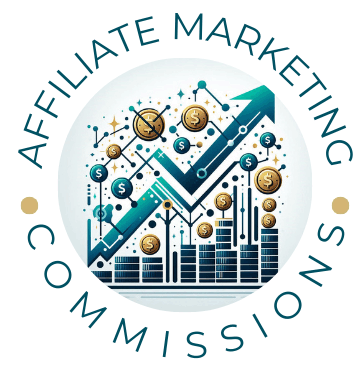Understanding what is an affiliate marketing program, mainly how to take advantage of it, involves more than just knowing what the products to offer and the commissions to get for it are.
A program of this kind it is a process which can be better understood if we do some reverse engineering, breaking down it into pieces, and that’s what we are going to do here through six key steps to show how it works.
Key #1 – Products or services and commissions

First of all, unlike other business models where you are the creator, producer or at least the owner of the products or services that you offer to your clients, the affiliate marketing model relieves you so to speak from having any stock because what you are going to do is not selling your own stuff but those of another.
The deal is that you are going not just to advertise passively but somehow actively promote, within all the resources of your business that means, your website, social media network, email lists, etc., the stuff of a third party called the brand, advertiser or merchant.
If your efforts for advertising and promoting are successful, the result should be that people coming to some of those resources of your business, called the referrals, are funneled to the offers of those advertisers where they will do an action previously agreed between the merchant and you as an affiliate.
Those actions could be registering to get notifications and offers, clicking on specific ads, or buying something among other things.
In return for those actions carried out for your referrals, the advertiser will pay you a commission whose amounts and periodicity have been agreed previously as well.
Key #2 – Affiliate ID and its tracking
How does the advertiser know when a visitor coming to its site was referred by you? How does the advertiser knows if such a visitor do the action that it is expected to do (clicking, registering, buying, etc.)? How does the advertiser calculate the commission that it should pay to you for the action done by your referral?
The answer to those questions is your Affiliate ID, in other words your personal tracking code.
The Affiliate ID is the code the advertiser uses to track all the operations that a referral led by your efforts, do on its site and that they will credit appropriately on your account for payment purposes.
This code could consist simply of an alphanumeric line or be included within a more extended HTML based design of a banner, header, footer, button, or another kind of ads. Then the only thing you should do is inserting the alphanumeric line or the whole HTML based design on strategic parts of your site for it to start working.
When a visitor comes to the different resources of your business (website, social media, email lists) and clicks on the specific links, is where tracking starts and will depend on if such visitor (now the referral) accomplish the expected task for crediting you for such action. That’s it!
Key #3 – The offer is theirs, the content is yours
If the process is that simple as we’ve described above, why don’t we fill the internet with our links? Logical thinking would tell us that the more we put our affiliate links out there, the more visitors and commissions we’ll get.
Here is where a loud warning should be stated.
Penalization
The experience says that no one wants more of those unsolicited and annoying ads that have inundated the internet  popping up everywhere particularly when they are not related with the content that you are looking for when navigating online.
popping up everywhere particularly when they are not related with the content that you are looking for when navigating online.
That kind of advertising has become so disgusting that provoked that search engines created specific algorithms to penalize when people abuse them. Those penalizations affect the reputation of the people responsible for putting those advertising everywhere, that means affiliates, but also the brand contained in such ads. That’s why advertiser got to protect themselves of the indiscriminate use of its own resources by their partners. The penalization then for an affiliate stuffing the internet with affiliate links will come from two sides.
Trust
The other important point you should bear in mind is that even when the products or services are from a third party, the context offered to your visitors is yours. That’s precisely what you sell, your knowledge about some topic, your abilities to solve specific problems, your guide to make a decision, your point of view about complex or controversial situations, your advice about the quality of products or services and so on.
In such a scenario, the people that come to your content through your website or related resources become your audience, your clients even when they can be referred to that third party. They are coming to you because they trust in you, not in them. In fact, they are interested in what you have to say good or not about the advertiser before they reach its site.
That is the reason why you can’t saturate your visitors with a ton of unsolicited, irrelevant and out of context ads. Think of this for a moment. What could happen if you go to the doctor complaining of a pain in your back, and suddenly the receptionist offers you buying a car or vacations to the Caribbean Sea? Do you think it would bother you? Well, the same would happen if you deviate for the real intention of your message to your visitors, which is to solve the question of why they come to your site.
So the moral here is that doesn’t matter how great an affiliate offer could be, it should be subordinate to your content, which in turn is subordinate to the core of your niche because that’s the real brand that you are building for your business. Otherwise, you are at risk of losing trust and get penalized.
Key #4 – Affiliate links, centralized information and reviews
Now we know why it’s not a good idea to spread our affiliate links all over the online world, mostly because they have no beneficial effect for your business and in turn can harm it.
But what about our website? We are the masters and lords of it, aren’t we? Well, to some extent. Nobody is going to keep you from doing whatever you want with your site, but yes, search engines cand do it with your indexing and ranking. So if what you are looking for is better rankings on Google, Bing a Yahoo your site have to comply with specific procedures.
One of them is related again with not stuffing your content with affiliate links, in the same way as you try to avoid outside. And by stuffing, we are talking about not just inserting a bunch of affiliate links on one post but also inserting affiliate links on each and every post or page of your website.
The question is, how can we go then with an affiliate program if we are going to be penalized for adding affiliates links in our content too? The answer is by centralizing your affiliate offers in key and strategic posts and pages and doing reviews. What is the advantage of doing this way?
Cleaning: You create the right amount of posts and pages that don’t contain an “affiliate link” strictly speaking. What they have is a link towards another post or page in your site. It creates a sensation for your readers that you are not a seller but an expert in the field, and over time creates authority for you and your site.
In-depth information: If people are really interested in a particular topic, they can go deeper over more data from you. More content to helps with your rankings and more authority before your readers.
Buffering: When you insert a link not just in your website but also in social media or email that leads the visitor to a third post or page in your website, you accomplish with two goals, avoid the penalization of putting affiliate links on those media and increase the visitors to more parts of your website.
Reviews are a crucial element of the strategy you carried out with the program you are affiliated with. They are a central piece of the information people ask for, about products or services when they start searching on Google or other search engines. If you write a useful review, with substantial research supporting it, thorough and complete good chances are that such a revision become a reference point for many visitors in the future and a vital source of affiliate income.
Master the way of organizing the content of your website to get authority by bringing valued and trustful content, and centralizing your affiliate offers. Learn with the experts in the field. Go here for more information.
Key #5 – Getting visitors and more important, clicks!
If the online business, in general, is based on the number of visitors your website receives in a determined time framework,  for the success of an affiliate program is crucial. Let’s suppose that your niche is perfectly outlined, you are writing great content focused on the interests of your audience and including affiliate links related to that content, relevant, and strategically located. Even though everything it’s ok and you are receiving a lot of visitors engaged with your pages or posts, not all of them are going to do the action that you expect they do.
for the success of an affiliate program is crucial. Let’s suppose that your niche is perfectly outlined, you are writing great content focused on the interests of your audience and including affiliate links related to that content, relevant, and strategically located. Even though everything it’s ok and you are receiving a lot of visitors engaged with your pages or posts, not all of them are going to do the action that you expect they do.
There is always a percentage of people that converts, that means that will follow your links and will buy or do whatever are they supposed to do and other portion that maybe will need a second opinion, another option, or simply they are not ready to take action. This is life! But doesn’t mean you have to cross your arms.
It will be helpful that you take advantage of some statistics tools like Google Analytics to determine how many visitors you get, let’s say daily or weekly and to know also how many of them are clicking on your links. Then you should know how many of those who click on your links are getting into the advertiser portal and registering or buying, for example. With this data, you are in a position to calculate the proportion of people who click on your links and convert at the advertiser site after they click.
Once you know the percentages of numbers 1 and 2 you can take some action to increase both of them. Maybe you need to write more posts to increase your rankings and make more visible your site to the world, or perhaps you can strengthen your interaction within your social media network or with your email lists to catch the attention of more people who would be interested in your contents.
At the same time some improvements could be made within your content, such as highlighting those paragraphs or sentences you consider more critical call the attention of visitors, or directly ask people to take action by a call to action buttons, or hyperlinks, etc.
Key #6 – Getting paid!
Finally, the sweetest part of working as a partner of an affiliate program comes when you receive the notification of payment for your partner, the company.
For this to happen is required that you configure some data such as your right name in case you are using a pen name in your site, your mail address mainly if the program establishes that the first payment will be by check, your bank account for the transfer of money once you start to getting amounts periodically.






2 thoughts on “What is an affiliate marketing program? – 6 keys to understanding it”
With affiliate marketing, it is important to remember that we are not actually “selling” something but offering advice and expertise. If we come across as selling then it probably won’t happen. But if we are helpful and give the consumer information they are looking for and need then we have a chance at making some money.
Hi I really enjoyed your post and found it super easy to follow with the format you have used with lists and table of contents. Not everyone understands what Affiliate Marketing is and the potential for making money online. You have given some very valuable information here for anyone wishing to start an Affiliate Marketing business online. I agree that the sweetest part of having your own online affiliate marketing business is getting paid, nothing like earning a passive income while you sleep. I also love your comment “its not rocket science to become an affiliate of a company”. This is very true and if you have the right training and work hard anyone can do this. Thanks for your great post.